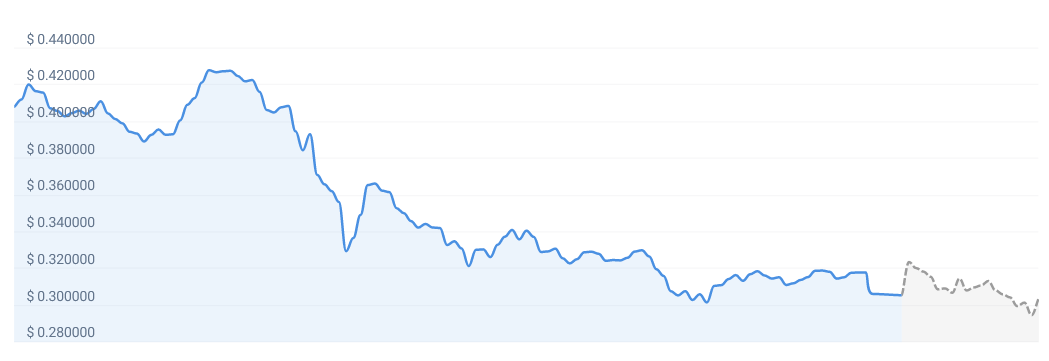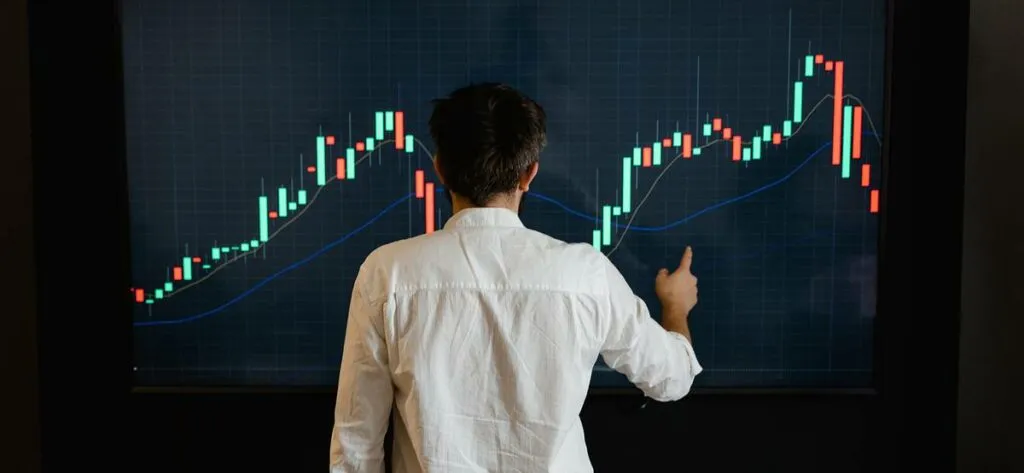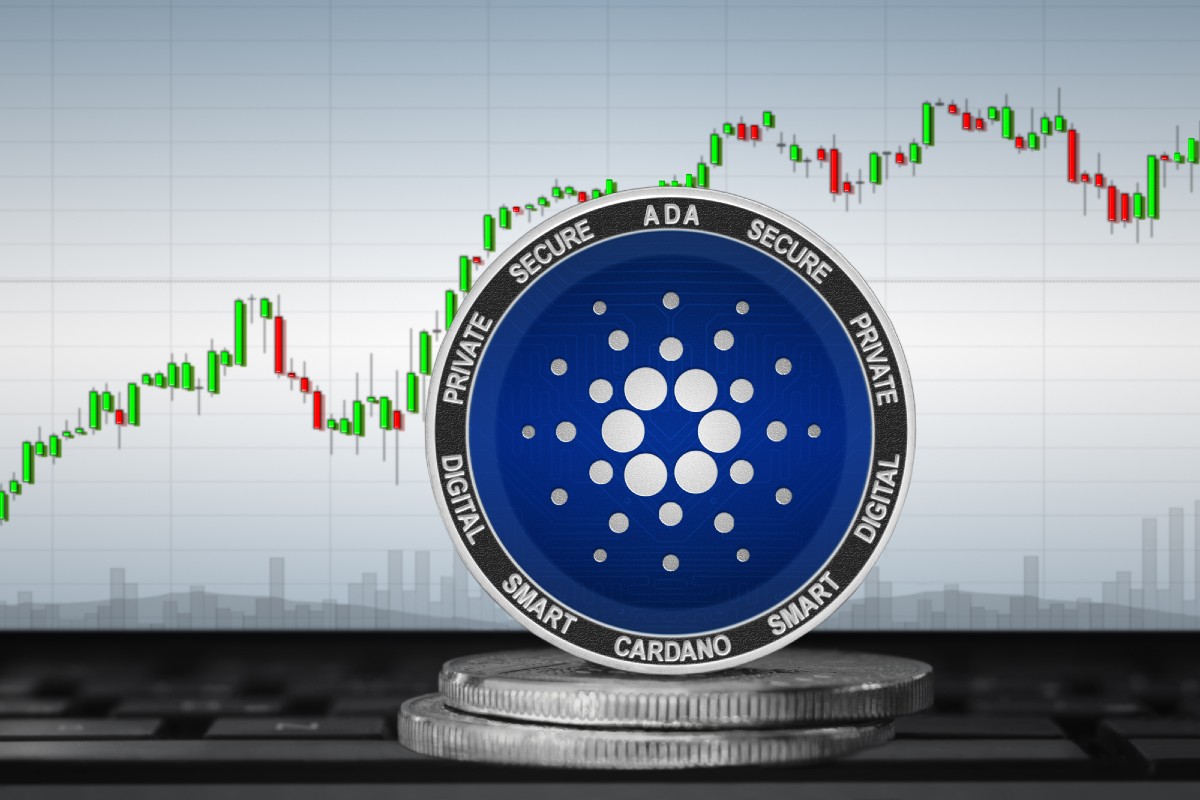According to our current Cardano price prediction, the value of Cardano is predicted to drop by -2.14% and reach $ 0.298362 by December 17, 2022. According to our technical indicators, the current sentiment is Bearish while the Fear & Greed Index is showing 27 (Fear). Cardano recorded 13/30 (43%) green days with 2.90% price volatility over the last 30 days. Based on our Cardano forecast, it’s now a bad time to buy Cardano.
Will the Cardano Stablecoins Help Boost ADA Community?
The Cardano system will launch two stablecoins in early 2023 and will have a chance to change the ecosystem.
Two stablecoins are expected to arrive in the Cardano community in early 2023. DJED, the algorithmic stablecoin from Coti, and USDA, the fully backed and regulated stablecoin from Emurgo, are each being built using Cardano smart contracts and will become the first stablecoins for the Cardano ecosystem.
The arrival of DJED has been a long-time coming, while the USDA project was recently announced in November 2022. Both projects come behind the failed Ardana stablecoin project, leaving the Cardano community still in need of a functioning stablecoin. If we’ve learned anything in 2022, it’s that not all stablecoins are created equal.
DJED is a highly anticipated and hotly contested new stablecoin originally announced in 2021. The Coti team designed, tested, and audited the coin to act as an autonomous bank by using a formal price verification process to remove volatility.
DJED is expected to be an over-collateralized algorithmic stablecoin, which the Coti team hopes will help solve the previous problems seen at TerraLUNA. DJED will use the reserve currency $SHEN to over-collateralize upwards of 800% to help sustain the DJED peg.
The DJED stablecoin development does not come with much investor confidence. Algorithmic stablecoins have proven very difficult to develop in the past. The recent scars in the industry left by the dramatic failure of the TerraLUNA project have left many in the community asking if the approach is the best idea. The failed Ardana stablecoin project, apart from running out of funds and also cited the difficulty of development on the Cardano blockchain.
DJED plans to enrich the Cardano ecosystem in several ways. For example, a Djed Pay decentralized application (Dapp) has been teased.
The Cardano Community also expects the arrival of USDA, a U.S. dollar-pegged stablecoin coming on the Anzens platform in January 2023. Emurgo, the founding company behind Cardano, is expected to release the fully fiat-backed and regulatory-compliant algorithmic stablecoin.
USDA will bring the Cardano ecosystem several fiat-based use cases and work to bring institution interests easier on-ramps into the ecosystem. The coin can be used for lending and borrowing and can also back crypto card payments. Emurgo will use US-based financial institutions to reserve USDA and ensure compliance.
The DeFi ecosystem sits with merely $60M in market capitalization and at #30 overall, according to DefiLlama. The new stablecoins can help boost the decentralized finance (DeFi) community within the Cardano ecosystem by bringing in dollar-backed reserves and more activity. At a minimum, Cardano will need to build out its ecosystem as well.
The DJED coin will have to overcome the stigma surrounding algorithmic coins and will do well to ease into integration. The usage of DJED will be reflective of how big the Cardano community can grow.
The USDA coin will expect to help bridge the gap between TradFi and DeFi. If Cardano can build out workable and accessible Dapps, USDA can potentially bring more activity into the ecosystem with its many use cases for users and large players.
Cardano One Week Price Prediction
According to our current Cardano price prediction, the value of Cardano is predicted to drop by -0.93% and reach $ 0.303810 by December 3, 2022. According to our technical indicators, the current sentiment is Bearish while the Fear & Greed Index is showing 28 (Fear). Cardano recorded 13/30 (43%) green days with 11.27% price volatility over the last 30 days. Based on our Cardano forecast, it’s now a bad time to buy Cardano.
ADA investors waiting for “Midnight” miracles may want to read this
Cardano had a lot going on irrespective of the ongoing FUD in the crypto market. The platform’s team continued building despite the market condition and launched a new confidentiality blockchain. The same was announced by Charles Hoskinson via Twitter.
The Cardano co-founder stated that Cardano would be launching a new product titled Midnight. It would be a data protection-based blockchain that would safeguard sensitive commercial and personal data.
The continuous developments and launches from the development team may have a positive impact on the platform’s perception. In lieu of this launch, the platform’s social mentions increased by 18% over the last week, according to LunarCrush.
Furthermore, Cardano’s weighted sentiment also witnessed a massive spike. As can be seen from the image below, the weighted sentiment for Cardano was overwhelmingly positive over the last week. This could be because Cardano had little exposure to FTX, as ADA was the only major cryptocurrency that wasn’t listed on the FTX exchange.
The positive sentiment may have also affected the state of Cardano’s NFTs. According to data provided by opencnft, the volume of NFTs being traded increased by 57.98% in the past 30 days. Additionally, the number of NFTs sold grew by 37% during the same period.
Blue chip NFTs on the Cardano network also performed well. As indicated by the image below, all blue chip NFTs, apart from The Ape Society, showed growth in terms of floor price and volume.
However, despite the growing interest in Cardano, network activity continued to decline.
From the image below, it can be seen that the number of daily active addresses on the network declined significantly over the past week. Its velocity depreciated as well, indicating that the frequency with which ADA was being transferred from one wallet to another had declined.
Moreover, according to data provided by Messari, Cardano’s volatility grew by 188% over October. Thus investing in ADA could prove to be riskier than usual especially now.
At press time, Cardano was trading at $0.324 and its price had depreciated by 1.11% in the last 24 hours. Its volume, however, appreciated at the same time and grew by 1.44% during the same time period.
Cardano Price Forecast For Tomorrow and Next Week Based on The Last 30 Days
The Cardano price forecast for the next 7 days is a projection based on the positive/negative trends in the past 30 days.
Cardano Price Today October 22: ADA Surges Despite Volatility
The Cardano price continues to remain extremely volatile as the macroeconomic conditions tank the crypto market.
The crypto market is in an extremely volatile stage. With reports highlighting that the US Federal Reserve will move forward with another 75 bps interest rate hike, the crypto market has been struggling. The Cardano (ADA) price has continued to show extreme volatility. The Cardano price today is trading at Rs. 28.64 after increasing close to 2% in the last 24 hours. However, it has fallen 0.60% in the last hour, bringing its losses for the week to 5.6%.
The Shiba Inu price also continues to trade in the red. It has fallen 0.28% in the last 24 hours and is trading at Rs. 0.00082.
The Bitcoin price continues to remain sluggish in the $18K-$19K range. It has increased 0.32% in the last day and is trading at Rs. 1581650. However, experts fear that Bitcoin can repeat the November 2018 50% crash.
Ethereum continues to be under the $1.3k mark. After falling 0.24% in the last hour, ETH is currently trading at Rs. 1,06,973. XRP surged by over 2% in the last 24 hours on the back of a big win in its case vs the SEC.
Avalanche is one of the biggest winners in the crypto market in the last 24 hours. It surged by over 3% yesterday and is trading at Rs. 1286.
The macroeconomic outlook is driving the crypto price movement. The Cardano price today continues to remain extremely volatile as the US Federal Reserve turns increasingly hawkish. Inflation levels continue to soar and the Fed is becoming increasingly restrictive. The CME Fed Watch tool currently shows a 95% likelihood of another 75 bps hike.
However, as the global economy weakens, Fed officials are becoming more careful of doing too much. Fed officials are likely to discuss a pause in the hikes and maybe even a pivot. The threat of recession will worry the Fed too.
The politico-economic crisis in the UK and the dire economy in China are also hurting the market.
The Federal Open Market Committee will meet on the 2nd of November. The Fed will announce its decision at the end of the meet.
Cardano Price History
Cardano was founded by tech company Input Output Hong Kong (IOHK). The CEO of IOHK Charles Hoskinson is a mathematician and one of the founders of the Ethereum network.
Cardano raised over $62 million in its 2016 Initial Coin Offering (ICO). In the three-month-long ICO, the company sold about 25.8 billion ADA.
Upon its launch, the Cardano network allotted 648 million ADA to the Cardano Foundation, 2.1 billion to founding member Emurgo, and about 2.5 billion to IOHK.
The Cardano Foundation supervises the Cardano project. IOHK is responsible for the development of the Cardano protocol.
The first exchange rate of ADA detected by our platform is $0.0240568, the lowest price was $0.0195063 in Oct 2017, and the maximum price that Cardano reached was $2.98 in Sep 2021.
The first year on which we have information, the ADA price closed at $0.7196950 this is 2,991.66% up from the open, the best year for Cardano price was 2021 average price was $1.50 and the price closed at $1.31 after reaching max price $3.04.
What Is Cardano’s Alonzo Upgrade?
On Sept. 12, Cardano released its highly-anticipated Alonzo upgrade. Following the upgrade, the blockchain network can now support a wide range of crypto applications, including non-fungible tokens (NFTs) and smart contracts.
According to the project’s founder Charles Hoskinson, Alonzo aims to introduce “programmability” to the network. He likened the upgrade to when JavaScript was introduced to web browsers and the transition from static web pages to the likes of Facebook and YouTube.
Alonzo is named after American mathematician Alonzo Church, who is considered to be one of the founding fathers of computer science.
In addition to supporting NFTs and smart contracts, Cardano can now be used for decentralized exchanges.
In general, Alonzo puts Cardano in the same class as Ethereum, the world’s leading blockchain which supports other applications other than its native Ether token. Smart contracts, for instance, are one of the cornerstones of the decentralized finance sector — and Cardano now supports smart contracts.
In February 2022, the number of Cardano wallets broke the three million milestone. Since December 2020, it has surged by 1,200%, from 190,000 to over 3,000,000. This coincided with an increase in smart contracts following the Alonzo Upgrade, and Cardano surpassed the 1,000 smart contracts milestone on Jan. 27, 2022.
Another indicator of the ecosystem’s explosive growth is developer activity: Cardano boasted the most developers contributing to its Github, beating out more developed blockchains like Solana. On average, more than 50 contributions are submitted to its repo per day.
However, the network is still struggling with implementing its smart contracts, and users had complaints about a sluggish launch of its SundaeSwap decentralized exchange in January 2022.
What Is Cardano’s Vasil Hard Fork?
Named after late Bulgarian mathematician Vasil Dabov, a prominent contributor to Cardano, the Vasil hard fork is touted as one of the most highly-anticipated upgrades for Cardano. The hard fork is the third development epoch of Cardano and is supposed to introduce several upgrades to the blockchain’s smart contract programming language Plutus and the network’s capacity.
The event was originally billed to happen in June 2022, but has been postponed a number of times.
Vasil will introduce five critical mechanisms to improve Cardano’s scalability and usability — CIP-31, CIP-32, CIP-33, CIP-40 and diffusion pipelining.
CIP-31, aka “reference inputs” will introduce a new kind of input that would allow developers to look at the result of an output without having to spend it. This would optimize transaction throughput and increase concurrency.
The CIP-32 proposal aims to enable inline datums. Rather than attach datum to datum hashes, which is the current state of things, CIP-32 would allow developers to attach datums to outputs. By implementing this update, devs can code scripts that directly point to the input, making room for simpler and quicker communication of datum values between users.
The Cardano Improvement Proposal 33 would allow reference scripts to be attached to outputs. As a result, the reference scripts are used to satisfy the validation requirements in place of the spending transaction. These reference scripts will make the validation process more efficient and reduce the size of transactions.
Meanwhile, CIP-40 features a brand-new type of output to transactions called collateral outputs, aimed at improving the overall scalability of the network.
Diffusing pipelining is Cardano’s consensus layer scaling solution. The improvement proposal will see more DApp deployment by overlaying some of the steps that a block needs to go through as it moves across the chain: this would allow for concurrent transactions.
What Is Cardano (ADA)?
Cardano is a proof-of-stake blockchain platform created with the intention of helping those with the power to change the world, bring about positive global change.
The open-source project’s goal is also to “take power away from unaccountable structures at the top and give it back to individuals on the margins.” Doing this would make our society more secure, transparent and fair.
Cardano was founded in 2017 and named after the 16th century Italian polymath Gerolamo Cardano. The native ADA token is named after 19th century mathematician Ada Lovelace, who is widely believed to be the world’s first computer programmer.ADA tokens give owners the right to vote on proposed changes to the software, meaning that they can play a role in how the network runs.
The developers of the layered blockchain believe that their technology- which makes it possible to create decentralized apps and smart contracts modularly- has already had some amazing applications.
On Aug. 12, 2021, Charles Hoskinson announced the launch of the Alonzo hard fork for Cardano, causing the price of ADA to surge by 116% in the following month. On Sept. 12, 2021, the hard fork officially launched, bringing smart contract functionality to Cardano users. Over 100 smart contracts were deployed within 24 hours after launching.
Cardano is used by agricultural companies to track the movements of fresh produce, while other products built on the platform allow for educational credentials to be stored in a tamper-proof way, and retailers to put an end to counterfeit goods.
Cardano was founded by Charles Hoskinson, who is also the CEO of IOHK, the company that built Cardano’s blockchain.
In an interview for CoinMarketCap’s Crypto Titans series, Hoskinson stated that he became involved in cryptocurrencies all the way back in 2011. He did a bit of mining and trading before getting his first professional job related to cryptocurrency in 2013 when he created a course on Bitcoin which was taken by 80,000 students.
Hoskinson isn’t only a technology entrepreneur, but also excelling in mathematics. In 2020, his company donated $500,000 worth of ADA to the University of Wyoming’s Blockchain Research and Development Lab.
Cardano is one of the most successful blockchains to use a proof-of-stake consensus mechanism. PoS uses less energy than Bitcoin’s proof-of-work algorithm, making it more environmentally friendly. Even though Ethereum is much larger, its transition to PoS will happen slowly over time.
The Cardano team has made sure that all of the technology developed goes through a rigorous process of peer-reviewed research. This ensures that bold ideas can be challenged before they are validated, making the blockchain more durable and stable. By doing this, potential pitfalls can be anticipated in advance, making the project more successful overall.
The Shelley upgrade in 2020 aimed to make Cardano’s blockchain significantly more decentralized than other large blockchains. Hoskinson predicted that this would then enable hundreds of assets to be run on its network.
Alonzo’s hard fork launch in September 2021 will conclude the Shelley era and begin the Goguen phase. Users can develop and deploy smart contracts on Cardano, which will allow for native decentralized applications (DApps) to be built on top of its blockchain. On September 2, 2021, Cardano’s price broke the $3 mark and reached an all-time high of $3.101 in anticipation of the launch.





